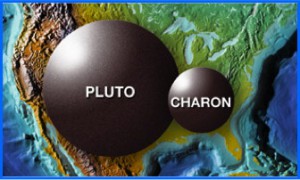The mind of a scientist understands, embraces, and executes the scientific method, the process by which an idea is created, then tested by experiment or model, validated or refuted, and then, when validated, culminates in the description of the results to the larger community through a publication. The cycle begins again, sometimes building on previously published work, or in some cases, the birth of new ideas to the scene, most likely inspired by previous knowledge.
A key component to a scientist’s work is the attendance and interaction with colleagues at scientific conferences. At such gatherings we can see examples of the scientific method in a multitude of stages: the birth of a new idea, the suggestion of methods to carry-out the experiment or computation, a presentation that disproves an approach requiring the scientist to start anew, through the description of the results of the recent experiment or computation.
~150 people are to gather this week at the Johns Hopkins University Applied Physics Laboratory in Laurel, MD to share ideas, debate hypotheses, and explain experiments related to the emissary from our Solar System’s Third Zone, the dwarf planet Pluto and its moons. The timing is crucial to have these conversations because in two years from now, in July 2015, NASA’s New Horizons Spacecraft will do a close fly-by of the Pluto system, a system never before visited by another spacecraft. The forum provides an update of the mission and its measurement capabilities and encourages healthy dialog among theorists who have predictions, laboratory spectroscopists who can build examples of chemistry happening on these icy bodies, and observers who have been monitoring and documenting the changing nature of Pluto and its environment.
Details about the Pluto Science Conference, “The Pluto System on the Eve of Exploration by New Horizons: Perspectives and Predictions,” can be found here at
https://dnnpro.outer.jhuapl.edu/plutoscience/Home.aspx.
You can follow the New Horizons mission status at any time by visiting the New Horizons Mission Website at http://pluto.jhuapl.edu/ and https://www.nasa.gov/mission_pages/newhorizons/main/index.html.
I’ll be providing summaries of the meeting content and discussions through a series of blog posts this week. For now, I’ll leave you with some things we do know about Pluto and its largest moon Charon.
The diameters of Pluto & Charon shown with respect to the USA for scale.
What do we know about Pluto so far?
- Highly elliptical (e = 0.25), Highly inclined (i = 17 deg), 248 year orbit
- Rotational period of 6.387230 days
- Small (diameter = 2328 ± 42 km), Rock/Ice object (“Icy Dwarf”)
- Density is 2.03 ± 0.06 g cm-3, Mass = 0.0022 MEarth
- Bright surface frosts of N2, CH4, CO, and C2H6 produce albedo of ~55%
- Highly variegated surface (bright and dark regions)
- Reddish in color, probably due to surface organics
- Tenuous, variable atmosphere (mostly N2; 2-10 µbars at the surface & going up)
What do we know about Charon?
- Discovered, by accident, in July 1978 by James Christy (USNO)
- In circular orbit ~19,573 km from Pluto, with a 6.3872273 day period
- Tidally-locked spin period (i.e., spin-orbit synchronous)
- Diameter is 1212 ± 3 km (about half of Pluto’s Diameter: “Binary Planet”)
- Density is 1.66 ± 0.06 g cm-3 (vs 2.03 ± 0.06 g cm-3 for Pluto)
- Surface has crystalline H2O-ice and NH3-hydrate (recent?)
- Average albedo ~35%, neutral color (variegation change over time?)
- Average T ~ 50 K, low thermal inertia (high porosity)
- No atmosphere detected yet (~10-300x lower pressure than Pluto’s)
(left) Charon Discovery Image July 1978; (right) New Horizons’ LORRI instrument spots Charon July 2013 from 6AU away.
To Pluto and beyond!



